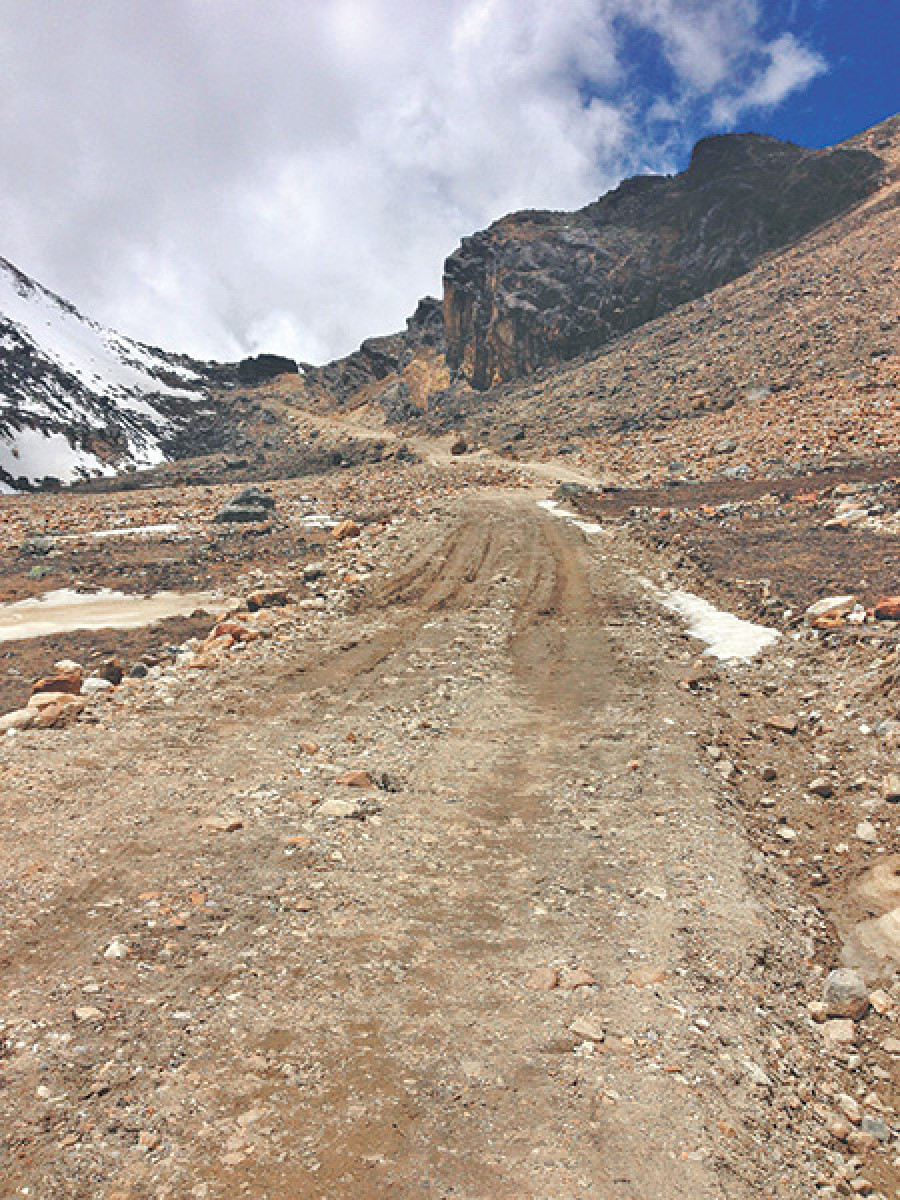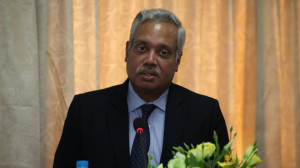National
Voters, leaders in eastern hills stress connectivity with China
n A woman plucks tea leaves in Pashupatinagar of Ilam in Province 1 on Monday. Post Photo: angad dhakal
Sanjeev Giri
Locals in the highland districts of Province 1, where transportation remains a major development issue, say better connectivity with neighbouring China will hold key to transforming the economy of the entire region.
Three districts in the region—Taplejung, Panchthar and Ilam—want the first federal government in Kathmandu and the new provincial authorities to internalise the importance of the northward connectivity, which they say “could be the blueprint” for the development of all of Nepal’s northern districts and the districts adjoining them.
Though leaders in the region never fail to place a special emphasis on improving access across the border, the election rhetoric seldom gets translated into action. The customary pre-election statements remain confined to public speeches, say locals.
A 22-km track was recently opened from Olangchungola, the northeastern tip of Taplejung, linking the district with China. However, the road has remained in poor condition. Also, the road section from Phungling to Olangchungola in Taplejung needs up-gradation, as it takes almost three days for locals to reach the border region of China, something they could do within half a day if the road is in good shape.
“Every election, politicians like to take the general public for a ride. A vast market of China is literally next door. Our livelihood opportunities would have been much better had there been better connectivity,” Pasang Sherpa, 80, of Suketar told the Post. Sherpa moved to Suketar from the remote outpost Olangchungola due to unavailability of basic facilities despite all the promises the border point offers. Further down in Panchthar district, Pradeep Gurung, 29, feels that focusing on connectivity will help the immediate districts as well as strengthen the position of the country as a whole because of better connectivity.
After waiting for Kathmandu for years and not getting much help, Taplejung locals themselves had invested Rs 25 million to open the 22-km track, for which China had provided human resource and equipment support.
Kuber Nepali, chief of the Taplejung Bazaar-Olangchungola Road Project, said the government has recently called a tender notice worth Rs 600 million to upgrade the road. According to Nepali, the border point was among the most vibrant ones in the entire region some 30 years ago. It was used as the official point for trading and exchange of state level visits by both the nations.
However, the development and consequent dependence on road connectivity from the southern districts gradually reduced the importance of the border point.
“The highway had not received its due importance until last year. But now, the government is lot more serious. We realise the importance of alternative road networks. Locals have also lobbied hard for better road connectivity to the north,” Nepali said.
Riwa Bazaar, the nearest market of China, lies around 22 kilometres from Nepal-China border.
Buddhi Narayan Shrestha, former director general of the Department of Survey and a border researcher, in a recent blog has mentioned that the Kimathanka-Riwa Bazaar road is commercially feasible, as it will help increase business activities in eastern Nepal with China. “But we have to construct 113 kilometres of additional road, all the way from Khandbari, south and west, to the Taplejung border. This road will connect China to Indian broad-gauge railway station at Jogbani (adjacent to Biratnagar),” he observes.
A better connectivity would give the much needed impetus to the overall development of the region. Not just trade, prospects of tourism too would enhance significantly if connectivity is improved.
The business community in the eastern region echoes these sentiments.
The high-altitude Kanchanjunga Trail, adjoining the world’s third highest mountain Kanchanjunga, and Pathivara, among others, can draw domestic as well as foreign tourists in large numbers. “Being a tea-loving nation, China holds a huge importance for businesses in Ilam, whose economic mainstay is tea production,” said Uday Chapagain, vice-president of Himalayan Orthodox Tea Producers Association, Nepal. “There’s a great demand of black tea in China and we have great potential to export it.” Additionally, the fertile eastern mountains are famous for their rich medicinal herbs and cash crops, such as cardamom. Of the cardamom worth around Rs7 billion, around 40 percent was exported via border point in Olangchungola in the fiscal year 2015-16, according to records kept by business associations in Taplejung.
“All the leaders have to do is move beyond pledges they make in their election manifestos and speeches. They need a long-term commitment towards increasing economic activities and development,” said Chapagain.
Former prime minister and senior UML leader Jhala Nath Khanal, a long-time elected leader from Ilam, feels that connectivity with China should be “a national priority as it holds big scope for the development of the entire nation”. “For us to reap benefits from China, we need to have a broader national plan. Connectivity through various means including railways will sooner or later be eased with technological innovation moving at a rapid pace,” said Khanal, who is contesting the federal polls from Ilam-1. “The county will get to see railway connectivity from the north within the next 10 years.”
Ever warring on issues big and small, there’s, however, unanimity here among parties across political spectrum when it comes to improving connectivity with China.
Nepali Congress candidate Bhupendra Kattel, who is contesting against Khanal, said political parties, not just of Ilam but the entire eastern region, agree that a stronger connectivity with China will transform the whole of the eastern Nepal. “There is no need to have second thought about connectivity enhancement,” Kattel said, adding that allegations that his party, the NC, has an Indian tilt are “baseless”.
“This is about development of the entire region, hence all the parties share a common view—which is a balanced connectivity with both the neighbours,” he said.




 7.12°C Kathmandu
7.12°C Kathmandu















